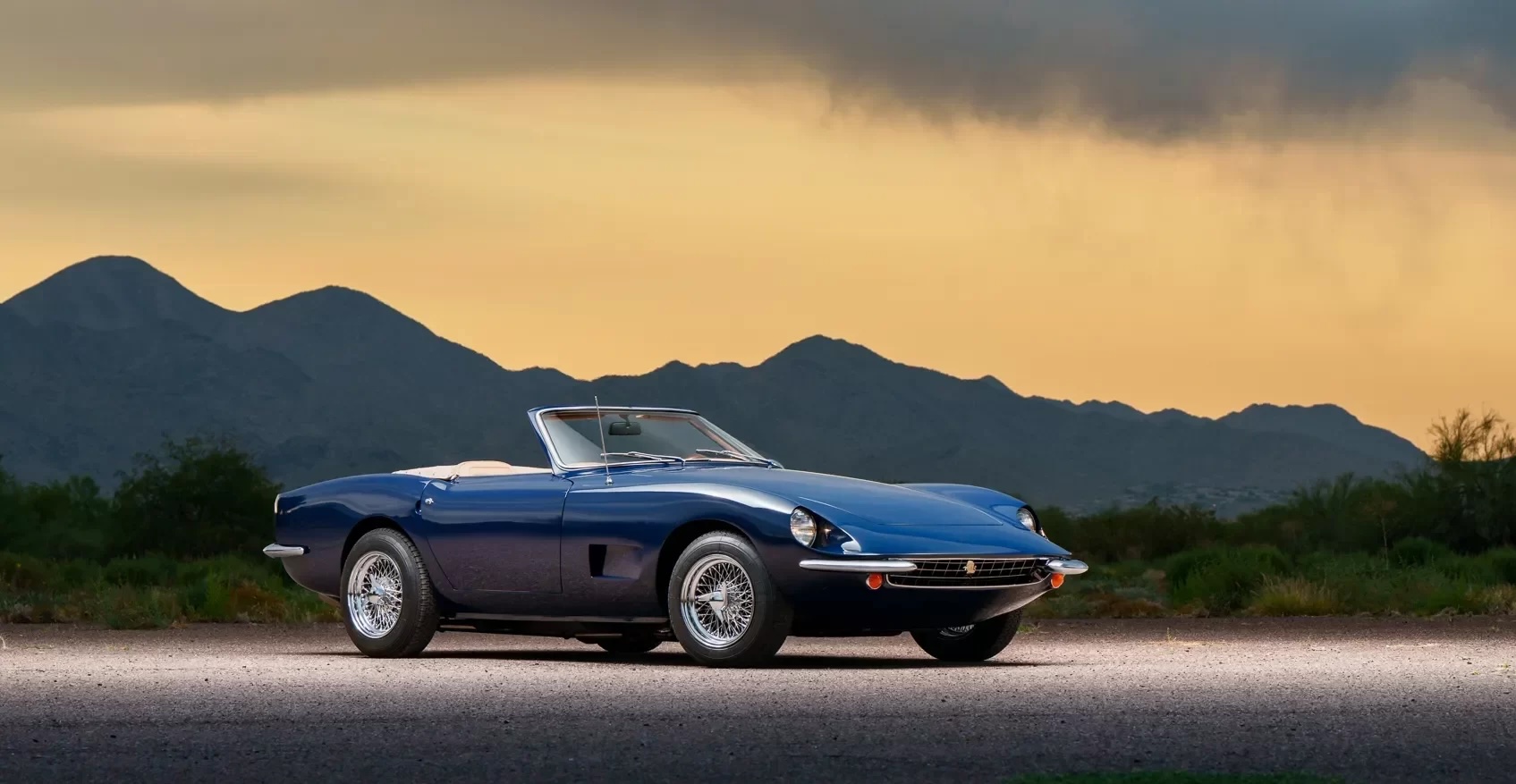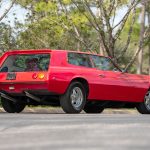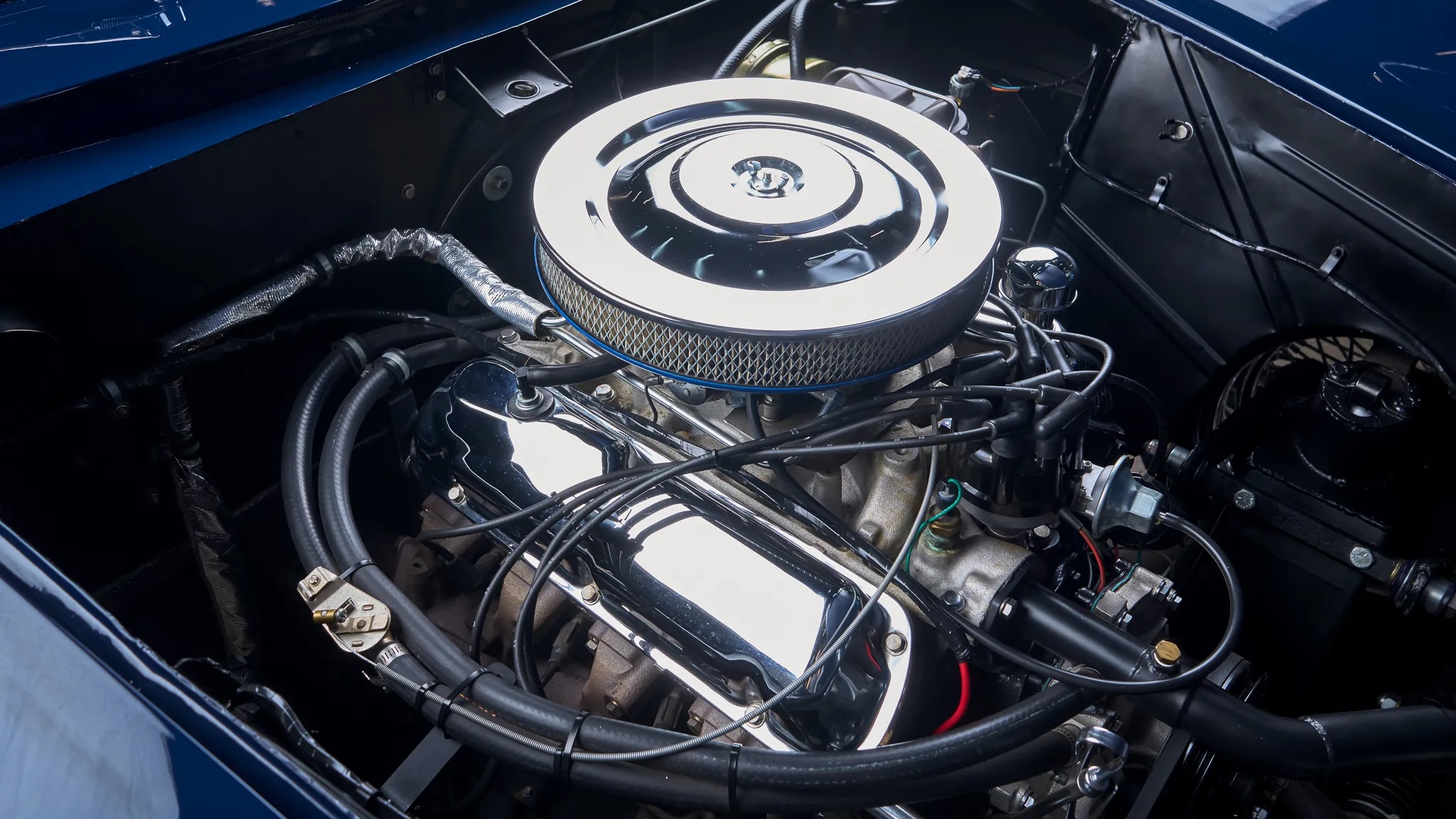With the looks and performance of a contemporary Ferrari or Maserati combined with the soundtrack and maintenance of a Mustang, the Intermeccanica Italia has a certain appeal. Although not as prestigious as those more famous Italian thoroughbred classics, it is more affordable and easier to live with. Apparently, this really resonated with two bidders last week, because a 1968 Italia convertible sold for $232,500 (£181,000). Nobody has ever paid more for one of these Italo-American hybrids at auction.
Intermeccanica wasn’t the only company to combine Euro styling and sophistication with American muscle. In fact, the 1960s and ’70s were a golden age of sorts for this practise. Among the Italians were Iso, Bizzarrini, and DeTomaso. The Brits did it with the AC Cobra, the Sunbeam Tiger, the Jensen Interceptor, the Gordon-Keeble, and various Bristols. Even the Swiss embraced American V8 power with Peter Monteverdi’s boutique luxury performance cars. But Intermeccanica was an especially international affair, founded by a Hungarian-born Canadian immigrant and his Czech-born Canadian wife after they moved to Turin – Italy’s motor city – before relocating to California and then back to Canada, where the company still builds Porsche 356 replicas.

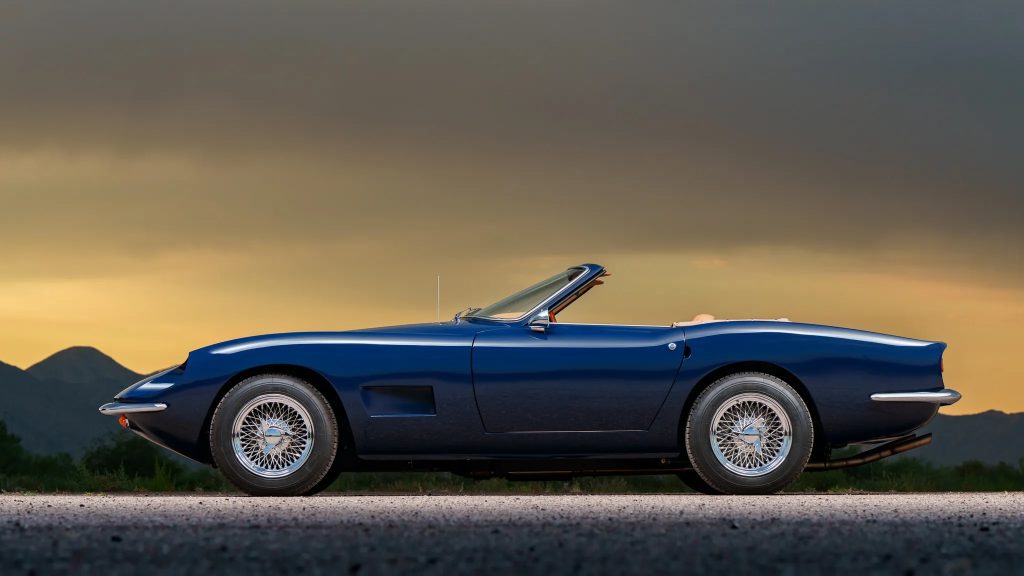
When Frank and Paula Reisner vacationed in Rome in the late 1950s, they fell in love with Italy and decided to move to Turin, where they set up Costruzione Automobili Intermeccanica. A tuning company at first, Intermeccanica sold performance kits for French Simcas, Peugeots, and Renaults, before constructing a Peugeot-powered Formula Junior and a small 500cc bubble-shaped coupe called the IMP.
Then, American engineer Milt Brown contracted with Intermeccanica to build a new Buick-powered GT car called the Apollo GT. The Apollo was short-lived, but it was just the kind of car for which Intermeccanica would become famous.
In 1965, Long Island, New York, dealer Jack Griffith commissioned Intermeccanica to build him a car similar to the Apollo. Like the Apollo, that project was short-lived, but the Reisners wound up with the full rights to the car. At first they called it the Omega, but after GM acquired the rights to that name they had to stop. Next they built it as the Torino, and it debuted at the 1967 New York auto show. Once again they ran into naming issues, as Ford objected to the moniker, so finally they settled on Italia.

With its long and low hood, scooped headlights, pert tail, and a badge that looked half Ferrari prancing horse and half Lamborghini raging bull, the Italia had just the right appearance. Early ones used Ford’s 271bhp 4.7-litre V8, but production soon switched to a 5.0 with 250bhp. At around $8000, the Italia was expensive, but it had a decent run, with about 400 coupes and convertibles built before production ended in 1972.
This one reportedly spent 37 years with a previous owner, and it received a restoration in the 2000s before strutting its stuff at the 2010 Meadow Brook Concours d’Elegance in Michigan. The seller last week purchased it in 2016. Details like the AutoMeter gauges, Borla mufflers, Wilwood rear calipers, and aftermarket radio reveal the car’s mixed heritage, but it looks very clean. It sold for £122,500 in Amelia Island, Florida, in 2015 and in Scottsdale, Arizona, the following year for £84,425.
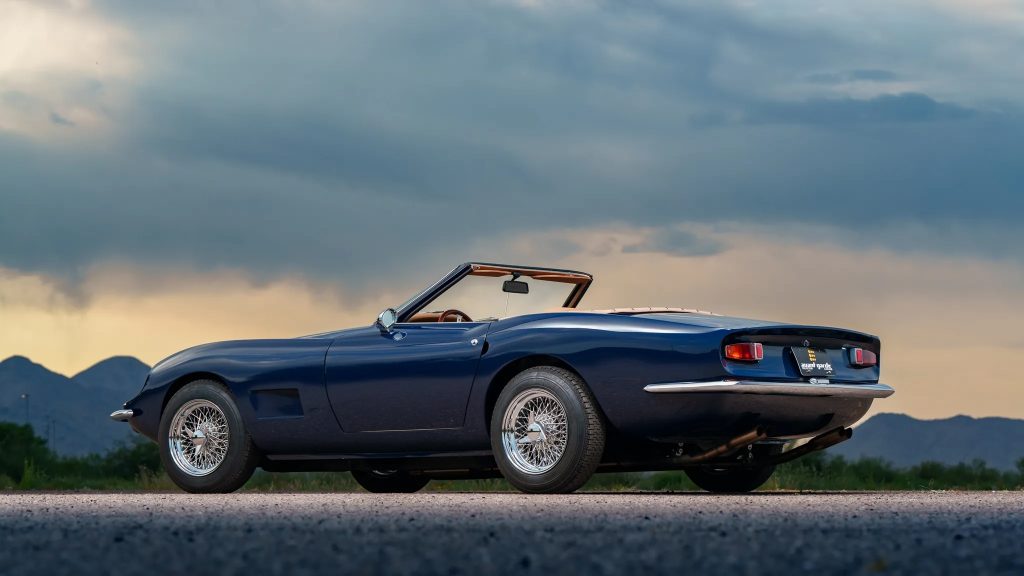
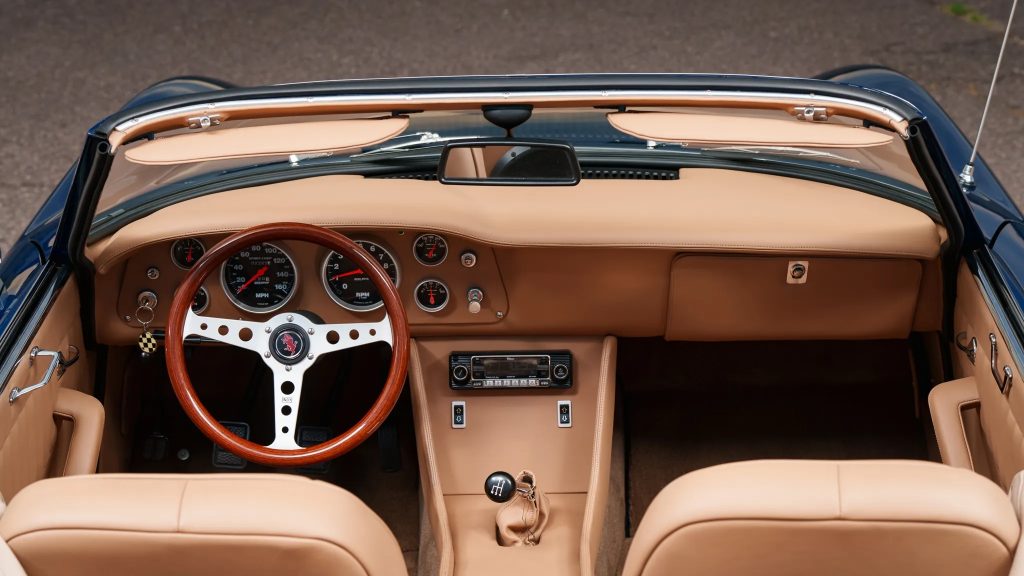
That 2015 result was the most anyone had paid for an Intermeccanica Italia at public auction until 2022, when a 1969 convertible sold for £154,650. The condition #1 (concours) value in the US Hagerty Price Guide has never been higher than $181,000 (£141,000), but now that this car has broken the record, it may just move the needle. With such a rare automobile, standout results like this can change our price guide values more dramatically than something more mainstream.
